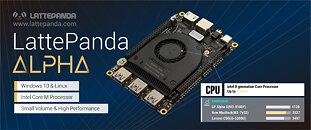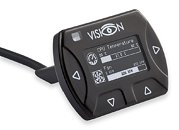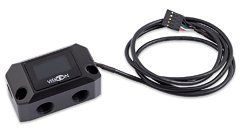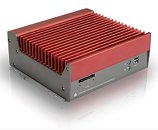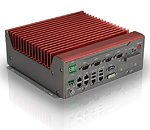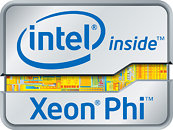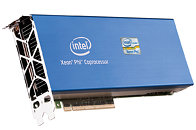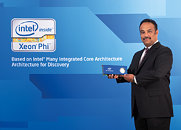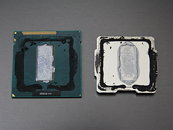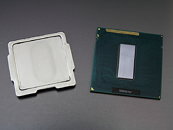Apr 16th, 2025 19:47 EDT
change timezone
Latest GPU Drivers
New Forum Posts
- Last game you purchased? (779)
- Windows 11 fresh install to do list (35)
- Need advice RAM for Asus Maximus hero z890 + core ultra 7 265k (18)
- Throttlestop 9.7.3 Legion 7 Pro 13900HX, RTX4090 locking frequency issue (1)
- Intel Iris XE Graphics Driver Issue. (4)
- 5070 Ti power limit questions (40)
- Tried installing 576.02 - installer window disappears (12)
- I tried to use AMD Auto Overclock, and now my PC has been freezing up sometimes. Afterwards, the screen goes black or displays artifacts. (23)
- BitLocker on other drives? (3)
- RX 9000 series GPU Owners Club (337)
Popular Reviews
- G.SKILL Trident Z5 NEO RGB DDR5-6000 32 GB CL26 Review - AMD EXPO
- ASUS GeForce RTX 5080 TUF OC Review
- ASUS GeForce RTX 5060 Ti TUF OC 16 GB Review
- DAREU A950 Wing Review
- NVIDIA GeForce RTX 5060 Ti PCI-Express x8 Scaling
- The Last Of Us Part 2 Performance Benchmark Review - 30 GPUs Compared
- Sapphire Radeon RX 9070 XT Pulse Review
- Sapphire Radeon RX 9070 XT Nitro+ Review - Beating NVIDIA
- Upcoming Hardware Launches 2025 (Updated Apr 2025)
- Palit GeForce RTX 5060 Ti Infinity 3 16 GB Review
Controversial News Posts
- NVIDIA GeForce RTX 5060 Ti 16 GB SKU Likely Launching at $499, According to Supply Chain Leak (182)
- NVIDIA Sends MSRP Numbers to Partners: GeForce RTX 5060 Ti 8 GB at $379, RTX 5060 Ti 16 GB at $429 (127)
- Nintendo Confirms That Switch 2 Joy-Cons Will Not Utilize Hall Effect Stick Technology (105)
- Over 200,000 Sold Radeon RX 9070 and RX 9070 XT GPUs? AMD Says No Number was Given (100)
- Nintendo Switch 2 Launches June 5 at $449.99 with New Hardware and Games (99)
- NVIDIA Launches GeForce RTX 5060 Series, Beginning with RTX 5060 Ti This Week (91)
- Sony Increases the PS5 Pricing in EMEA and ANZ by Around 25 Percent (85)
- NVIDIA PhysX and Flow Made Fully Open-Source (77)
News Posts matching #Integrated
Return to Keyword Browsing
Kiloview Introduces their AMD Ryzen Embedded-powered X86-64 Compute Card
Unlock Infinite Possibilities in AV-over-IP with Kiloview X86-64 Compute Card powered by AMD. At Kiloview, we design solutions that empower AV professionals with unmatched flexibility and seamless operation. That's why we created the X86-64 Compute Card for the Cradle Series RF02—bringing the power of a PC into a professional AV server to simplify workflows and maximize expandability. Powered by AMD Ryzen Embedded 8645HS and Radeon 780M GPU, this high-performance computing module allows users to run Kiloview's software ecosystem or any third-party applications—from Multiview, Routing, Recording to Mixing, Switching and production, and more—all on a unified platform. With this, your AV workflow is no longer limited by hardware constraints. With software-defined flexibility and AMD's processing power, we've made AV-over-IP easier than ever.
Modern media workflows demand uncompromising performance. From 4K multi-channel encoding/decoding to ultra-low latency streaming, broadcasters and content creators need solutions with both raw power and flexibility. This is where Kiloview's latest X86-64 Compute Card, advanced by AMD, comes into play. By integrating a high-performance computing architecture from AMD with Kiloview's KiloLink Server Technology, users can significantly enhance overall efficiency for their AV production and device management. The KiloLink Server optimizes the process of IP-based video transmission to remotely bulk upgrade, restore, reset, or restart any paired Kiloview products with just a few clicks.
Modern media workflows demand uncompromising performance. From 4K multi-channel encoding/decoding to ultra-low latency streaming, broadcasters and content creators need solutions with both raw power and flexibility. This is where Kiloview's latest X86-64 Compute Card, advanced by AMD, comes into play. By integrating a high-performance computing architecture from AMD with Kiloview's KiloLink Server Technology, users can significantly enhance overall efficiency for their AV production and device management. The KiloLink Server optimizes the process of IP-based video transmission to remotely bulk upgrade, restore, reset, or restart any paired Kiloview products with just a few clicks.
Realtek Showcasing Highly Integrated 2.5G Ethernet Switch Solution and Complete xPON Broadband Solutions at Network X 2024
Realtek Semiconductor will participate in Network X 2024 (October 08~10, 2024), an event being held in Paris, France, that will bring together over five thousand people from all over the world to include senior network infrastructure and service professionals from telcos, leading vendors, industry bodies, governments, analysts, and media to showcase the latest trending products, solutions, and services. Realtek will exhibit its highly integrated 2.5G Ethernet switch solutions and complete xPON broadband solutions to meet various bandwidth application needs.
Highly Integrated 2.5G Ethernet Switch Solution
With breakthroughs in large language model technology, generative AI has ushered in a new era of AI applications. The demand for AI applications is no longer confined to high-end cloud applications but has extended from the cloud to edge computing and is becoming increasingly widespread. Consequently, the high bandwidth requirements at the edge have become more critical. Currently, edge network speeds commonly use 1GbE. To address the growing bandwidth demands of AI applications, Realtek has developed a 2.5G Ethernet switch solution that integrates various technologies to provide 2.5GbE downstream bandwidth and 10GbE upstream bandwidth. This solution is designed to support future AI-enabled endpoint devices, such as AI PCs and AI notebooks, to meet their high bandwidth needs. Additionally, this 2.5G Ethernet switch solution can be used in Wi-Fi 6 and Wi-Fi 7 wireless routers, supporting high bandwidth applications to meet user demands for high bandwidth at the edge in AI applications.
Highly Integrated 2.5G Ethernet Switch Solution
With breakthroughs in large language model technology, generative AI has ushered in a new era of AI applications. The demand for AI applications is no longer confined to high-end cloud applications but has extended from the cloud to edge computing and is becoming increasingly widespread. Consequently, the high bandwidth requirements at the edge have become more critical. Currently, edge network speeds commonly use 1GbE. To address the growing bandwidth demands of AI applications, Realtek has developed a 2.5G Ethernet switch solution that integrates various technologies to provide 2.5GbE downstream bandwidth and 10GbE upstream bandwidth. This solution is designed to support future AI-enabled endpoint devices, such as AI PCs and AI notebooks, to meet their high bandwidth needs. Additionally, this 2.5G Ethernet switch solution can be used in Wi-Fi 6 and Wi-Fi 7 wireless routers, supporting high bandwidth applications to meet user demands for high bandwidth at the edge in AI applications.
StreamUnlimited in Partnership with Realtek Launched Stream210 Embedded Hardware Module for Audio Streaming
The Ameba RTL8730E was selected as the core of the new module as it fulfills the high demands of technically complex products while offering leading-edge size, power consumption and cost. Realtek Product Line Manager for IoT, Angus Hsu, said: "We are thrilled to be able to work with StreamUnlimited, a professional leader in the audio industry with a strong design capability, innovative thinking and wide market coverage across a range of segments ideally suited to our RTL8730E product."
StreamUnlimited, the innovative leader in embedded audio software and hardware solutions, supports customers through product development, certification, launch and long-term maintenance of products based on the same StreamSDK software stack. Markus Rutz, StreamUnlimited CTO, said: "We are delighted to work with Realtek for our Stream210 module, which complements our diverse family of certified modules, providing product managers across a wide variety of market sectors with the tools to be innovative, disruptive and ambitious when it comes to creating complete product families with StreamUnlimited."
StreamUnlimited, the innovative leader in embedded audio software and hardware solutions, supports customers through product development, certification, launch and long-term maintenance of products based on the same StreamSDK software stack. Markus Rutz, StreamUnlimited CTO, said: "We are delighted to work with Realtek for our Stream210 module, which complements our diverse family of certified modules, providing product managers across a wide variety of market sectors with the tools to be innovative, disruptive and ambitious when it comes to creating complete product families with StreamUnlimited."
China Launches Massive $47.5 Billion "Big Fund" to Boost Domestic Chip Industry
Beijing has doubled down on its push for semiconductor self-sufficiency with the establishment of a new $47.5 billion investment fund to accelerate growth in the domestic chip sector. The fund, officially registered on May 24th under the name "China Integrated Circuit Industry Investment Fund Phase III", represents the largest of three state-backed vehicles aimed at cultivating China's semiconductor capabilities. The announcement comes as tensions over advanced chip technology continue to escalate between the U.S. and China. Over the past couple years, Washington has steadily ratcheted up export controls on semiconductors to Beijing over national security concerns about potential military applications. These measures have lent new urgency to China's quest for self-sufficiency in chip design and manufacturing.
With a war chest of 344 billion yuan ($47.5 billion), the "Big Fund" dwarfs the combined capital of the first two semiconductor investment vehicles launched in 2014 and 2019. Officials have outlined a multipronged strategy targeting key bottlenecks, focusing on equipment for chip fabrication plants. The fund has bankrolled major projects such as flash memory maker Yangtze Memory Technologies and leading foundries like SMIC and Huahong. China's homegrown chip industry still needs to catch up to global leaders like Intel, Samsung, and TSMC. However, the immense scale of state-directed capital illustrates Beijing's unwavering commitment to developing a self-reliant supply chain for semiconductors—a technology viewed as indispensable for economic and military competitiveness. News of the "Big Fund" sent Chinese chip stocks surging over 3% on hopes of fresh financing tailwinds.
With a war chest of 344 billion yuan ($47.5 billion), the "Big Fund" dwarfs the combined capital of the first two semiconductor investment vehicles launched in 2014 and 2019. Officials have outlined a multipronged strategy targeting key bottlenecks, focusing on equipment for chip fabrication plants. The fund has bankrolled major projects such as flash memory maker Yangtze Memory Technologies and leading foundries like SMIC and Huahong. China's homegrown chip industry still needs to catch up to global leaders like Intel, Samsung, and TSMC. However, the immense scale of state-directed capital illustrates Beijing's unwavering commitment to developing a self-reliant supply chain for semiconductors—a technology viewed as indispensable for economic and military competitiveness. News of the "Big Fund" sent Chinese chip stocks surging over 3% on hopes of fresh financing tailwinds.

NVIDIA's Bryan Catanzaro Discusses Future of AI Personal Computing
Imagine a world where you can whisper your digital wishes into your device, and poof, it happens. That world may be coming sooner than you think. But if you're worried about AI doing your thinking for you, you might be waiting for a while. In a fireside chat Wednesday (March 20) at NVIDIA GTC, the global AI conference, Kanjun Qiu, CEO of Imbue, and Bryan Catanzaro, VP of applied deep learning research at NVIDIA, challenged many of the clichés that have long dominated conversations about AI. Launched in October 2022, Imbue made headlines with its Series B fundraiser last year, raising over $200 million at a $1 billion valuation.
The Future of Personal Computing
Qiu and Catanzaro discussed the role that virtual worlds will play in this, and how they could serve as interfaces for human-technology interaction. "I think it's pretty clear that AI is going to help build virtual worlds," said Catanzaro. "I think the maybe more controversial part is virtual worlds are going to be necessary for humans to interact with AI." People have an almost primal fear of being displaced, Catanzaro said, but what's much more likely is that our capabilities will be amplified as the technology fades into the background. Catanzaro compared it to the adoption of electricity. A century ago, people talked a lot about electricity. Now that it's ubiquitous, it's no longer the focus of broader conversations, even as it makes our day-to-day lives better.
The Future of Personal Computing
Qiu and Catanzaro discussed the role that virtual worlds will play in this, and how they could serve as interfaces for human-technology interaction. "I think it's pretty clear that AI is going to help build virtual worlds," said Catanzaro. "I think the maybe more controversial part is virtual worlds are going to be necessary for humans to interact with AI." People have an almost primal fear of being displaced, Catanzaro said, but what's much more likely is that our capabilities will be amplified as the technology fades into the background. Catanzaro compared it to the adoption of electricity. A century ago, people talked a lot about electricity. Now that it's ubiquitous, it's no longer the focus of broader conversations, even as it makes our day-to-day lives better.

EK Shows Nucleus AIO CR360 for Direct-Die Water Cooling at CES 2024
During the CES 2024 show, EK unveiled an exciting new addition to their premium all-in-one (AIO) CPU cooler lineup—the EK-Nucleus AIO CR360 Direct Die D-RGB. As the name suggests, this new 360 mm AIO water cooler is purpose-built for direct die cooling of delidded Intel LGA1700 CPUs. The EK-Nucleus Direct Die stands out with its custom cold plate and mounting mechanism, which are exclusively engineered for exposed CPU dies. The nickel-plated copper base ensures compatibility with liquid metal TIMs like the included Thermal Grizzly Conductonaut, which comes in the package. EK has worked with der8auer to provide delidding service kits and tools to facilitate easy DIY removal of the integrated heat spreader (IHS).
The package also contains a contact frame and protective foam for safe liquid metal application. At the heart of the cooler is a powerful AIO pump EK co-developed with the OEM manufacturer, meaning it is not an off-the-shelf pump found in other AIOs and is capable of up to 500 L/h flow rate. The reinforced, sleeved rubber tubing is fitted with aluminium covers for durability. Integrated omnilink connectors allow daisy chaining of the three included 120 mm D-RGB fans for cable management. The EK-Nucleus Direct Die offers extensive RGB lighting customization with illuminated circle accents on the removable pump top covers. The diamond-cut brushed aluminium side panels and radiator cowl add to the premium aesthetic. The new AIO will be available for the Intel LGA1700 platform, with hopefully more versions later. The EK-Nucleus AIO CR360 Direct Die D-RGB is now available for pre-order at €202.90 MSRP price tag.
The package also contains a contact frame and protective foam for safe liquid metal application. At the heart of the cooler is a powerful AIO pump EK co-developed with the OEM manufacturer, meaning it is not an off-the-shelf pump found in other AIOs and is capable of up to 500 L/h flow rate. The reinforced, sleeved rubber tubing is fitted with aluminium covers for durability. Integrated omnilink connectors allow daisy chaining of the three included 120 mm D-RGB fans for cable management. The EK-Nucleus Direct Die offers extensive RGB lighting customization with illuminated circle accents on the removable pump top covers. The diamond-cut brushed aluminium side panels and radiator cowl add to the premium aesthetic. The new AIO will be available for the Intel LGA1700 platform, with hopefully more versions later. The EK-Nucleus AIO CR360 Direct Die D-RGB is now available for pre-order at €202.90 MSRP price tag.
Jon Peddie Research: Client CPU Shipments up 17% From Last Quarter
Jon Peddie Research reports the growth of the global PC client-based CPU units market reached 53.6 million units in Q2'23, up 17%, and iGPU shipments increased by 14% to 49 million units. Year over year, iGPUs declined -29%.
Integrated GPUs will have a compound annual growth rate of 2.5% during 2022-2026 and reach an installed base of 4.8 billion units at the end of the forecast period. Over the next five years, the penetration of iGPUs in the PC will grow to reach a level of 98%.
Integrated GPUs will have a compound annual growth rate of 2.5% during 2022-2026 and reach an installed base of 4.8 billion units at the end of the forecast period. Over the next five years, the penetration of iGPUs in the PC will grow to reach a level of 98%.

Intel Developing Efficient Solution for Path Tracing on Integrated GPUs
Intel's software engineers are working on path-traced light simulation and conducting neural graphics research, as documented in a recent company news article, with an ambition to create a more efficient solution for integrated graphics cards. The company's Graphics Research Organization is set to present their path-traced optimizations at SIGGRAPH 2023. Their papers have been showcased at recent EGSR and HPG events. The team is aiming to get iGPUs running path-tracing in real time, by reducing the number of calculations required to simulate light bounces.
The article covers three different techniques, all designed to improve GPU performance: "Across the process of path tracing, the research presented in these papers demonstrates improvements in efficiency in path tracing's main building blocks, namely ray tracing, shading, and sampling. These are important components to make photorealistic rendering with path tracing available on more affordable GPUs, such as Intel Arc GPUs, and a step toward real-time performance on integrated GPUs." Although there is an emphasis on in-house products in the article, Intel's "open source-first mindset" hints that their R&D could be shared with others—NVIDIA and AMD are likely still struggling to make ray tracing practical on their modest graphics card models.
The article covers three different techniques, all designed to improve GPU performance: "Across the process of path tracing, the research presented in these papers demonstrates improvements in efficiency in path tracing's main building blocks, namely ray tracing, shading, and sampling. These are important components to make photorealistic rendering with path tracing available on more affordable GPUs, such as Intel Arc GPUs, and a step toward real-time performance on integrated GPUs." Although there is an emphasis on in-house products in the article, Intel's "open source-first mindset" hints that their R&D could be shared with others—NVIDIA and AMD are likely still struggling to make ray tracing practical on their modest graphics card models.

AMD Ryzen 7040HS and 7040H "Phoenix" Laptop CPUs Get Tested
AMD is late in releasing its Phoenix Zen 4 lineup of mobile APUs - the original April launch has been missed, and laptops bearing Ryzen 7000HS & H-series are expected to arrive at some point this month. Preview hardware has made its way into the hands of testers, and one particular outlet - Golden Pig Upgrade, a content creator on the Chinese Bilibili video site - has performed benchmark tests. He seems to be the first reviewer to get hands-on time with AMD Ryzen 7040 Phoenix APUs, and his findings point to class leading performance results in terms of graphical capabilities - the 7840HS (packing a Radeon 780M RDNA3 iGPU) is compared to the Rembrandt-based 7735H, as well as a pair of Intel Raptor Lake CPUs - the 13700H and 13500H models.
AMD's newest Phoenix APU is the group leader in GPU performance stakes, but the jump up from the last-gen Rembrandt (RDNA2 iGPU) chip is not all that significant. VideoCardz reckons that the Radeon 780M integrated GPU is roughly equivalent to an NVIDIA GeForce MX550 dGPU and not far off from a GeForce GTX 1650 Max-Q graphics card (in terms of benchmark performance). According to AMD's internal documentation the RDNA 3 core architecture utilized in Phoenix APUs is referred to as "2.5" so this perhaps explains why the 780M is not doing laps around its older silbing(s).
AMD's newest Phoenix APU is the group leader in GPU performance stakes, but the jump up from the last-gen Rembrandt (RDNA2 iGPU) chip is not all that significant. VideoCardz reckons that the Radeon 780M integrated GPU is roughly equivalent to an NVIDIA GeForce MX550 dGPU and not far off from a GeForce GTX 1650 Max-Q graphics card (in terms of benchmark performance). According to AMD's internal documentation the RDNA 3 core architecture utilized in Phoenix APUs is referred to as "2.5" so this perhaps explains why the 780M is not doing laps around its older silbing(s).
Minisforum Launches Venus UM773 Lite Mini PC
On January 7th, the Minisforum UM773 was launched in China with the AMD Ryzen 7 7735HS processor and received widespread praise from consumers. Now, the new version of UM773, UM773 Lite, has arrived globally with a more affordable price. Considering that users usually connect external keyboards and mouses, the two USB 3.2 ports have been replaced with USB 2.0 ports. All other design will be the same as UM773. The price, however, will be more favorable.
The new UM773 Lite features the new AMD Ryzen 7 7735HS, AMD Radeon 680M Integrated Graphics, DDR5 dual-channel memory, PCIe 4.0 SSD, and the most advanced USB4 Type-C port. The Ryzen 7 7735HS is one of AMD's new Ryzen 7000 series mobile processors, featuring 8 cores and 16 threads, with a based clock of 3.2 GHz and a maximum turbo clock of 4.75 GHz and a default TDP targeted at 54 W. The RDNA2 Radeon 680M integrated GPU has 12 CUs up to 2.4 GHz.
The new UM773 Lite features the new AMD Ryzen 7 7735HS, AMD Radeon 680M Integrated Graphics, DDR5 dual-channel memory, PCIe 4.0 SSD, and the most advanced USB4 Type-C port. The Ryzen 7 7735HS is one of AMD's new Ryzen 7000 series mobile processors, featuring 8 cores and 16 threads, with a based clock of 3.2 GHz and a maximum turbo clock of 4.75 GHz and a default TDP targeted at 54 W. The RDNA2 Radeon 680M integrated GPU has 12 CUs up to 2.4 GHz.

AMD Socket AM5 "Zen 4" Processors to have RDNA2 Integrated Graphics Across the Lineup
The first desktop processors to implement AMD's "Zen 4" microarchitecture will feature integrated graphics as standard across the lineup, according to a Chips and Cheese report citing leaked AMD design documents. Currently, most of the Socket AM4 desktop processor lineup lacks integrated graphics, and specialized "G" SKUs with integrated graphics dot it. These SKUs almost always come with compromises in CPU performance or PCIe I/O. With its 5 nm "Raphael" Socket AM5 desktop processor, AMD is planning to change this, in a bid to match up to Intel on the universality of integrated graphics.
Built in the 5 nm silicon fabrication process, the "Raphael" silicon combines "Zen 4" CPU cores along with an iGPU based on the RDNA2 graphics architecture. This would be the first time AMD updated the SIMD architecture of its Ryzen iGPUs since 2017. The RDNA2-based iGPU will come with a more advanced DCN (Display CoreNext) component than current RDNA2-based discrete GPUs, with some SKUs even featuring DisplayPort 2.0 support, besides HDMI 2.1. By the time "Raphael" is out (2022-23), it is expected that USB4 type-C would gain popularity, and mainstream motherboards as well as pre-built desktops could ship with USB4 with DisplayPort 2.0 passthrough. AMD relies on a discrete USB4 controller with PCI-Express 4.0 x4 wiring, for its first Socket AM5 platform.
Built in the 5 nm silicon fabrication process, the "Raphael" silicon combines "Zen 4" CPU cores along with an iGPU based on the RDNA2 graphics architecture. This would be the first time AMD updated the SIMD architecture of its Ryzen iGPUs since 2017. The RDNA2-based iGPU will come with a more advanced DCN (Display CoreNext) component than current RDNA2-based discrete GPUs, with some SKUs even featuring DisplayPort 2.0 support, besides HDMI 2.1. By the time "Raphael" is out (2022-23), it is expected that USB4 type-C would gain popularity, and mainstream motherboards as well as pre-built desktops could ship with USB4 with DisplayPort 2.0 passthrough. AMD relies on a discrete USB4 controller with PCI-Express 4.0 x4 wiring, for its first Socket AM5 platform.
LattePanda Alpha Announced - A Palm-Sized and Low-Power Windows 10 SBC
The LattePanda Alpha, based on Intel Core m3-8100Y, is a Dual-Core 1.10 GHz CPU that bursts up to 3.40 GHz. Integrated Intel UHD Graphics 615 into the processor, the LattePanda Alpha delivers enhanced media conversion, fast frame rates, and 4K Ultra HD (UHD) video. All of this computing power dissipates only 8 W power, which is the perfect choice for users who need a small, portable, and light SBC for their powerful DIY handheld. And, given its incredibly small size, the LattePanda Alpha can be easily hidden, functioning as the secretly powerful brains behind users coolest project.

Intel Debuts 2nd-Gen Horse Ridge Cryogenic Quantum Control Chip
At an Intel Labs virtual event today, Intel unveiled Horse Ridge II, its second-generation cryogenic control chip, marking another milestone in the company's progress toward overcoming scalability, one of quantum computing's biggest hurdles. Building on innovations in the first-generation Horse Ridge controller introduced in 2019, Horse Ridge II supports enhanced capabilities and higher levels of integration for elegant control of the quantum system. New features include the ability to manipulate and read qubit states and control the potential of several gates required to entangle multiple qubits.
"With Horse Ridge II, Intel continues to lead innovation in the field of quantum cryogenic controls, drawing from our deep interdisciplinary expertise bench across the Integrated Circuit design, Labs and Technology Development teams. We believe that increasing the number of qubits without addressing the resulting wiring complexities is akin to owning a sports car, but constantly being stuck in traffic. Horse Ridge II further streamlines quantum circuit controls, and we expect this progress to deliver increased fidelity and decreased power output, bringing us one step closer toward the development of a 'traffic-free' integrated quantum circuit."-Jim Clarke, Intel director of Quantum Hardware, Components Research Group, Intel.
"With Horse Ridge II, Intel continues to lead innovation in the field of quantum cryogenic controls, drawing from our deep interdisciplinary expertise bench across the Integrated Circuit design, Labs and Technology Development teams. We believe that increasing the number of qubits without addressing the resulting wiring complexities is akin to owning a sports car, but constantly being stuck in traffic. Horse Ridge II further streamlines quantum circuit controls, and we expect this progress to deliver increased fidelity and decreased power output, bringing us one step closer toward the development of a 'traffic-free' integrated quantum circuit."-Jim Clarke, Intel director of Quantum Hardware, Components Research Group, Intel.

Intel Advances Progress in Integrated Photonics for Data Centers
Today, at Intel Labs Day, Intel highlighted industry-leading technological advances toward the realization of the company's long-standing vision of integrating photonics with low-cost, high-volume silicon. The advancements represent critical progress in the field of optical interconnects, which address growing challenges around the performance scaling of electrical input/output (I/O) as compute-hungry data workloads increasingly overwhelm network traffic in data centers. Intel demonstrated advances in key technology building blocks, including miniaturization, paving the way for tighter integration of optical and silicon technologies.
"We are approaching an I/O power wall and an I/O bandwidth gap that will dramatically hinder performance scaling. The rapid progress Intel is making in integrated photonics will enable the industry to fully re-imagine data center networks and architectures that are connected by light. We have now demonstrated all of the critical optical technology building blocks on one silicon platform, tightly integrated with CMOS silicon. Our research on tightly integrating photonics with CMOS silicon can systematically eliminate barriers across cost, power and size constraints to bring the transformative power of optical interconnects to server packages." -James Jaussi, senior principal engineer and director of PHY Lab, Intel Labs.
"We are approaching an I/O power wall and an I/O bandwidth gap that will dramatically hinder performance scaling. The rapid progress Intel is making in integrated photonics will enable the industry to fully re-imagine data center networks and architectures that are connected by light. We have now demonstrated all of the critical optical technology building blocks on one silicon platform, tightly integrated with CMOS silicon. Our research on tightly integrating photonics with CMOS silicon can systematically eliminate barriers across cost, power and size constraints to bring the transformative power of optical interconnects to server packages." -James Jaussi, senior principal engineer and director of PHY Lab, Intel Labs.
Latest 3DMark Update adds Night Raid DX12 Benchmark for Integrated Graphics
With update 2.6.6174, released today, 3DMark now includes a new benchmark dubbed Night Raid. This latest addition to the popular 3DMark suite offers DX12 performance testing for laptops, tablets and other devices with integrated graphics. It also offers full support for ARM based processors in the latest always-connected PCs running Microsoft's Windows 10 on ARM. Users running 3DMark Basic Edition which is free will have access to this latest addition upon installing the update.
The Night Raid benchmark continues the trend of offering two graphics tests and a CPU test. While not as visually stunning as previous entries this is to be expected considering it is targeted at integrated graphics processors and entry level systems. Even so, it makes use of numerous graphical features with graphics test 1 including; dynamic reflections, ambient occlusion, and deferred rendering. Graphics test 2 features; tessellation, complex particle systems and depth of field effects with forward-rendering. Finally, the CPU test will measures performance through a combination of physics simulation, occlusion culling, and procedural generation.
The Night Raid benchmark continues the trend of offering two graphics tests and a CPU test. While not as visually stunning as previous entries this is to be expected considering it is targeted at integrated graphics processors and entry level systems. Even so, it makes use of numerous graphical features with graphics test 1 including; dynamic reflections, ambient occlusion, and deferred rendering. Graphics test 2 features; tessellation, complex particle systems and depth of field effects with forward-rendering. Finally, the CPU test will measures performance through a combination of physics simulation, occlusion culling, and procedural generation.

Chinese Company Begins Making x86 Processors Based on AMD "Zen" Architecture
Chinese chipmaker Hygon began mass-producing its first x86 processors codenamed "Dhyana" based on AMD's "Zen" micro-architecture. The processor is the fruition of a deal AMD entered with a Chinese state-owned company back in mid-2016. As part of this deal, a company called Haiguang Microelectronics Company (HMC), in which AMD has a 51 percent stake, would license the "Zen" architecture to another company called Hygon (Chengdu Haiguang Integrated Circuit Design Co.), in which AMD owns a 30 percent stake. Hygon would then design "Dhyana," and a third entity (likely TSMC or some other Chinese foundry), would contract-manufacture the chip.
Such legal gymnastics is necessary to ensure AMD makes good on the $293 million it will take from the Chinese firms to license "Zen," while not breaching the x86 architecture cross-licensing agreement it signed with Intel, the core x86 IP owner. Chinese firms are going through all this trouble to build "Dhyana" instead of simply placing a large order of EPYC processors not just because they want more control over the supply and pricing of these chips, but probably also to ensure that China can keep an eye on all the on-die software that makes the processor tick, and weed out any backdoors to foreign governments (*cough*NSA*cough*).
Such legal gymnastics is necessary to ensure AMD makes good on the $293 million it will take from the Chinese firms to license "Zen," while not breaching the x86 architecture cross-licensing agreement it signed with Intel, the core x86 IP owner. Chinese firms are going through all this trouble to build "Dhyana" instead of simply placing a large order of EPYC processors not just because they want more control over the supply and pricing of these chips, but probably also to ensure that China can keep an eye on all the on-die software that makes the processor tick, and weed out any backdoors to foreign governments (*cough*NSA*cough*).

Aqua Computer Announces the VISION Lineup of Watercooling Add-ons
What will water blocks look like in the future? This was the question that Aqua Computer has asked itself before they started developing VISION.
From this question emerged the idea for an OLED display integrated to water coolers.
During the development of the display integration, Aqua Computer realized that there are many other stand-alone use cases for this product - and as such, the VISION product line was born. In addition to the pure display functionality, VISION has been extended in variants with touch control, infrared receiver and RGB-LED. A menu-driven setup has been integrated and VISION also has a whole range of inputs and outputs: both a temperature sensor and a flow sensor can be directly connected to VISION. The solution can display various system information like temperatures, fan speed, CPU load or memory usage and also values from other Aqua Computer devices. The aquasuite 2017 software allows to choose from customizable layout templates.
From this question emerged the idea for an OLED display integrated to water coolers.
During the development of the display integration, Aqua Computer realized that there are many other stand-alone use cases for this product - and as such, the VISION product line was born. In addition to the pure display functionality, VISION has been extended in variants with touch control, infrared receiver and RGB-LED. A menu-driven setup has been integrated and VISION also has a whole range of inputs and outputs: both a temperature sensor and a flow sensor can be directly connected to VISION. The solution can display various system information like temperatures, fan speed, CPU load or memory usage and also values from other Aqua Computer devices. The aquasuite 2017 software allows to choose from customizable layout templates.
Simple Audio Unveils High-Fidelity Speakers Designed for Modern Music Lovers
Today Simple Audio announced the addition of two new hi-fidelity speaker solutions to their existing line of networked HD streaming players. The new speakers, dubbed Simple Audio Listen and Simple Audio Go bring audiophile sound, designer styling, and versatile connectivity to today's digital music lovers.
Simple Audio Listen - Stereo Speakers with Bluetooth
Simple Audio Listen is beautifully designed to deliver breathtaking audio from compact stereo speakers that look great on the desktop, bookshelf, and in any room. The speakers incorporate technology generally reserved for high-end audiophile systems, including a fully digital signal path, DSP, and bi-amplified design to deliver amazing audio quality. And because today's music fans listen to music from a variety of digital devices, Listen has a variety of inputs including USB, Bluetooth and line-in connections, allowing it to play music from nearly any device in the home. Listen features a unique, elegant touch interface, with no buttons, dials or knobs, and includes an infrared remote.
Simple Audio Listen - Stereo Speakers with Bluetooth
Simple Audio Listen is beautifully designed to deliver breathtaking audio from compact stereo speakers that look great on the desktop, bookshelf, and in any room. The speakers incorporate technology generally reserved for high-end audiophile systems, including a fully digital signal path, DSP, and bi-amplified design to deliver amazing audio quality. And because today's music fans listen to music from a variety of digital devices, Listen has a variety of inputs including USB, Bluetooth and line-in connections, allowing it to play music from nearly any device in the home. Listen features a unique, elegant touch interface, with no buttons, dials or knobs, and includes an infrared remote.
Habey Intros PRO-6820 Fanless Core i7 Quad-Core System with 6 GbE Interfaces
HABEY USA, a leading manufacturer of embedded computer and an Associate member of the Intel Intelligent Systems Alliance, introduces the PRO-6820. This is a fanless barebone system, with a chassis built tough for extended industrial processing indoors or outdoors. The system measures in at 9.45"x9.96"x4.53", not much bigger than our small form factor systems, running off Intel's 3rd Generation Ivy Bridge Quad Core i3/i5/i7 processor, and capable of up to 8GB of memory from 2x 204-Pin DDR3 SO-DIMM slots.
Rich with I/Os, the PRO-6820 offers 6x instal USB slots, 2x front accessible USB 3.0 slots and 4x rear USB 2.0 slots. The system also has 2x PS2 ports, 1x externally accessible 8-bit GPIO port, 4x COM ports, 6x LAN ports, 1x mic-in, 1x audio-out, 1x CF Card Socket & 1x externally accessible 2.5" SATA HDD. The Intel Integrated HD Graphics controller allows 1x VGA port with resolution up to 2048x1536 & 1x DVI-D ports with resolution up to 1920x1200.
Rich with I/Os, the PRO-6820 offers 6x instal USB slots, 2x front accessible USB 3.0 slots and 4x rear USB 2.0 slots. The system also has 2x PS2 ports, 1x externally accessible 8-bit GPIO port, 4x COM ports, 6x LAN ports, 1x mic-in, 1x audio-out, 1x CF Card Socket & 1x externally accessible 2.5" SATA HDD. The Intel Integrated HD Graphics controller allows 1x VGA port with resolution up to 2048x1536 & 1x DVI-D ports with resolution up to 1920x1200.

Acer Announces Aspire 5600U and 7600U All-in-One PCs
Acer America today announced that it's delivering two elegant all-in-one (AIO) desktop models featuring Windows 8 to customers in the U.S. The Acer Aspire 7600U and 5600U Series were built to deliver all aspects of digital life into a stylish entertainment hub that can be enjoyed by every member of the family. Sporting an extremely slim profile of less than 1.4 inches and a clean design, these AIOs will enhance any room in the home.

Intel Federal LLC to Propel Supercomputing Advancements for the U.S. Government
With the U.S. Government increasingly using high- performance computing (HPC) to address current and future national challenges, Intel Corporation today announced it has been awarded two subcontracts totaling $19 million with the U.S. Department of Energy (DOE). As part of these two awards, Intel Federal LLC, a wholly owned subsidiary, will be a major participant in the Lawrence Livermore National Security, LLC (LLNS) managed Extreme-Scale Computing Research and Development "FastForward" program aimed at driving advancements in exascale computing.
The DOE has been a leading developer of supercomputing technology for a broad range of critical applications in the space of national security, economy, energy resources and consumption. The "FastForward" program will harness the talents of the national laboratories, academia and U.S. industry to develop the next generation of HPC technologies.
The DOE has been a leading developer of supercomputing technology for a broad range of critical applications in the space of national security, economy, energy resources and consumption. The "FastForward" program will harness the talents of the national laboratories, academia and U.S. industry to develop the next generation of HPC technologies.

Microsoft Announces Surface: New Family of PCs for Windows
Today at an event in Hollywood, Microsoft unveiled Surface: PCs built to be the ultimate stage for Windows. Company executives showed two Windows tablets and accessories that feature significant advances in industrial design and attention to detail. Surface is designed to seamlessly transition between consumption and creation, without compromise. It delivers the power of amazing software with Windows and the feel of premium hardware in one exciting experience.

Intel Xeon Processors E5 Achieve Fastest Adoption, Announcing Xeon Phi Co-Processors
The Intel Xeon processor E5-2600 product family reached a new supercomputing milestone as the fastest adopted new processing technology to power 44 systems, including 3 Petascale-class supercomputers on the 39th edition of the Top500 list announced today.
The "SuperMUC" supercomputer at LRZ in Germany, which ranked fourth on the list, delivers 2.9 PetaFLOPs of performance, making it the most powerful in Europe, as well as the largest installation based on the new Intel Xeon processors E5 family.
The "SuperMUC" supercomputer at LRZ in Germany, which ranked fourth on the list, delivers 2.9 PetaFLOPs of performance, making it the most powerful in Europe, as well as the largest installation based on the new Intel Xeon processors E5 family.
Fusion-io Powers Seven New Gen 2 HP IO Accelerators
Fusion-io today announced that it is enabling high performance database and virtualization solutions with seven new Fusion-powered HP IO Accelerator products for the industry-leading HP ProLiant and HP BladeSystem platforms. Integrated into HP ProLiant Generation 8 (Gen8) servers, the new HP IO Accelerators can boost application performance to address organizations' growing requirements to cost-effectively accelerate data-intensive applications.
To enable enterprises to cost-effectively enhance their data infrastructure, one or more HP IO Accelerators can be easily integrated within servers according to application and organizational needs. The HP IO Accelerators sit inside the server, directly on the PCIe bus with CPUs and Memory, rather than external to the server in a storage array being accessed over much slower links. The IO Accelerators boost applications by bypassing traditional storage controllers and unlocking trapped compute cycles.
To enable enterprises to cost-effectively enhance their data infrastructure, one or more HP IO Accelerators can be easily integrated within servers according to application and organizational needs. The HP IO Accelerators sit inside the server, directly on the PCIe bus with CPUs and Memory, rather than external to the server in a storage array being accessed over much slower links. The IO Accelerators boost applications by bypassing traditional storage controllers and unlocking trapped compute cycles.

TIM is Behind Ivy Bridge Temperatures After All
It's proven: the thermal interface material (TIM) used by Intel, inside the integrated heatspreader (IHS) of its Core "Ivy Bridge" processors are behind its higher than expected load temperatures. This assertion was first made in late-April by an Overclockers.com report, and was recently put to test by Japanese tech portal PC Watch, in which an investigator carefully removed the IHS of a Core i7-3770K processor, removed the included TIM and binding grease, and replaced them with a pair of aftermarket performance TIMs, such as OCZ Freeze and Coolaboratory Liquid Pro.
PC Watch findings show that swapping the TIM, if done right, can shave stock clock (3.5 GHz, Auto voltage) temperatures by as much as 18% (lowest temperatures by the Coolaboratory TIM), and 4.00 GHz @ 1.2V temperatures by as much as 23% (again, lowest temperatures on the Coolaboratory TIM). The change in TIM was also change the overclockability of the chip, which was then able to sustain higher core voltages to facilitate higher core clock speeds. The report concluded that Intel's decision to use thermal paste inside the IHS of its Ivy Bridge chips, instead of fluxless solder, poses a very real impact on temperatures and overclockability.
PC Watch findings show that swapping the TIM, if done right, can shave stock clock (3.5 GHz, Auto voltage) temperatures by as much as 18% (lowest temperatures by the Coolaboratory TIM), and 4.00 GHz @ 1.2V temperatures by as much as 23% (again, lowest temperatures on the Coolaboratory TIM). The change in TIM was also change the overclockability of the chip, which was then able to sustain higher core voltages to facilitate higher core clock speeds. The report concluded that Intel's decision to use thermal paste inside the IHS of its Ivy Bridge chips, instead of fluxless solder, poses a very real impact on temperatures and overclockability.
Apr 16th, 2025 19:47 EDT
change timezone
Latest GPU Drivers
New Forum Posts
- Last game you purchased? (779)
- Windows 11 fresh install to do list (35)
- Need advice RAM for Asus Maximus hero z890 + core ultra 7 265k (18)
- Throttlestop 9.7.3 Legion 7 Pro 13900HX, RTX4090 locking frequency issue (1)
- Intel Iris XE Graphics Driver Issue. (4)
- 5070 Ti power limit questions (40)
- Tried installing 576.02 - installer window disappears (12)
- I tried to use AMD Auto Overclock, and now my PC has been freezing up sometimes. Afterwards, the screen goes black or displays artifacts. (23)
- BitLocker on other drives? (3)
- RX 9000 series GPU Owners Club (337)
Popular Reviews
- G.SKILL Trident Z5 NEO RGB DDR5-6000 32 GB CL26 Review - AMD EXPO
- ASUS GeForce RTX 5080 TUF OC Review
- ASUS GeForce RTX 5060 Ti TUF OC 16 GB Review
- DAREU A950 Wing Review
- NVIDIA GeForce RTX 5060 Ti PCI-Express x8 Scaling
- The Last Of Us Part 2 Performance Benchmark Review - 30 GPUs Compared
- Sapphire Radeon RX 9070 XT Pulse Review
- Sapphire Radeon RX 9070 XT Nitro+ Review - Beating NVIDIA
- Upcoming Hardware Launches 2025 (Updated Apr 2025)
- Palit GeForce RTX 5060 Ti Infinity 3 16 GB Review
Controversial News Posts
- NVIDIA GeForce RTX 5060 Ti 16 GB SKU Likely Launching at $499, According to Supply Chain Leak (182)
- NVIDIA Sends MSRP Numbers to Partners: GeForce RTX 5060 Ti 8 GB at $379, RTX 5060 Ti 16 GB at $429 (127)
- Nintendo Confirms That Switch 2 Joy-Cons Will Not Utilize Hall Effect Stick Technology (105)
- Over 200,000 Sold Radeon RX 9070 and RX 9070 XT GPUs? AMD Says No Number was Given (100)
- Nintendo Switch 2 Launches June 5 at $449.99 with New Hardware and Games (99)
- NVIDIA Launches GeForce RTX 5060 Series, Beginning with RTX 5060 Ti This Week (91)
- Sony Increases the PS5 Pricing in EMEA and ANZ by Around 25 Percent (85)
- NVIDIA PhysX and Flow Made Fully Open-Source (77)

























